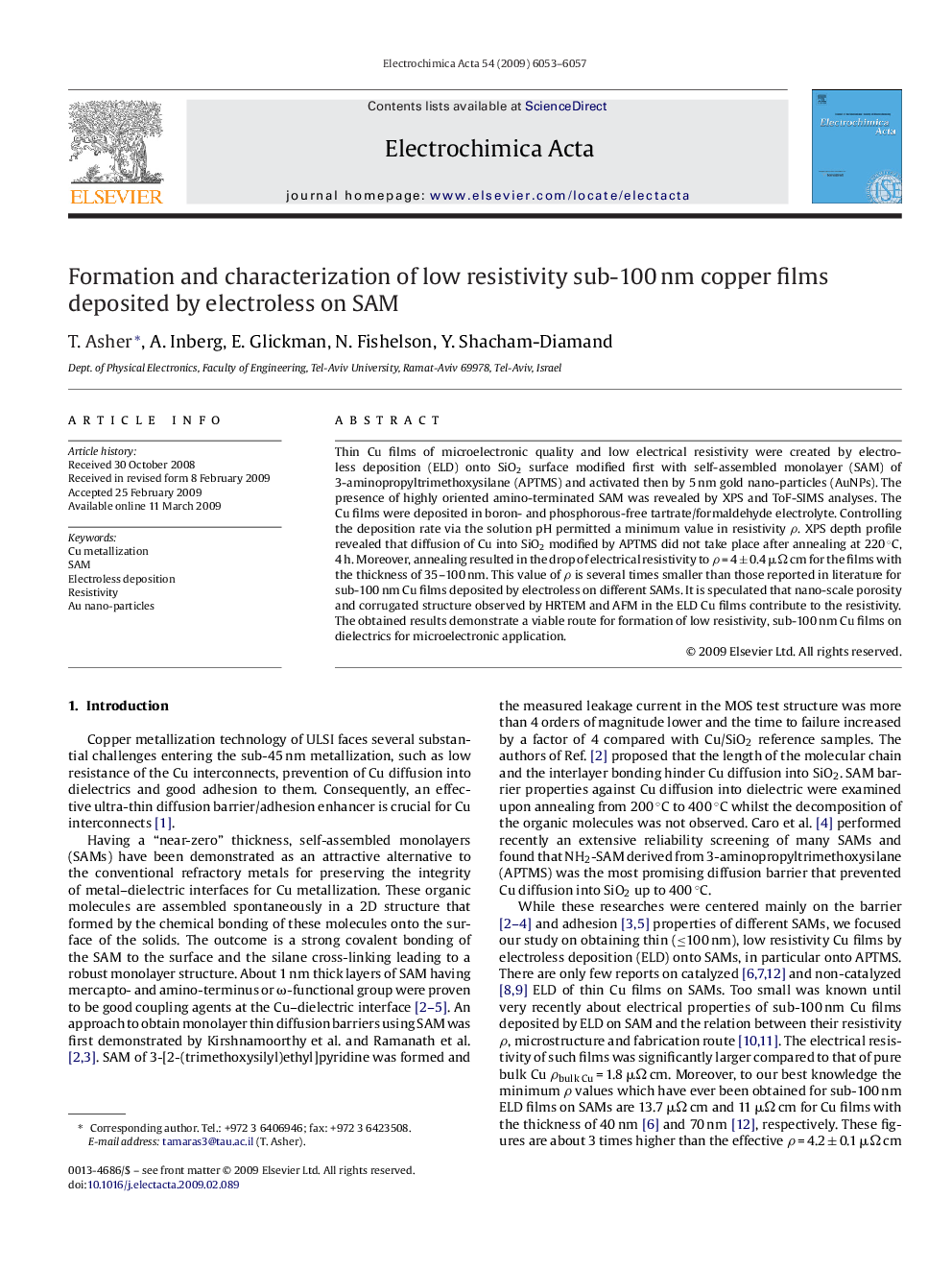| Article ID | Journal | Published Year | Pages | File Type |
|---|---|---|---|---|
| 192562 | Electrochimica Acta | 2009 | 5 Pages |
Thin Cu films of microelectronic quality and low electrical resistivity were created by electroless deposition (ELD) onto SiO2 surface modified first with self-assembled monolayer (SAM) of 3-aminopropyltrimethoxysilane (APTMS) and activated then by 5 nm gold nano-particles (AuNPs). The presence of highly oriented amino-terminated SAM was revealed by XPS and ToF-SIMS analyses. The Cu films were deposited in boron- and phosphorous-free tartrate/formaldehyde electrolyte. Controlling the deposition rate via the solution pH permitted a minimum value in resistivity ρ. XPS depth profile revealed that diffusion of Cu into SiO2 modified by APTMS did not take place after annealing at 220 °C, 4 h. Moreover, annealing resulted in the drop of electrical resistivity to ρ = 4 ± 0.4 μΩ cm for the films with the thickness of 35–100 nm. This value of ρ is several times smaller than those reported in literature for sub-100 nm Cu films deposited by electroless on different SAMs. It is speculated that nano-scale porosity and corrugated structure observed by HRTEM and AFM in the ELD Cu films contribute to the resistivity. The obtained results demonstrate a viable route for formation of low resistivity, sub-100 nm Cu films on dielectrics for microelectronic application.
